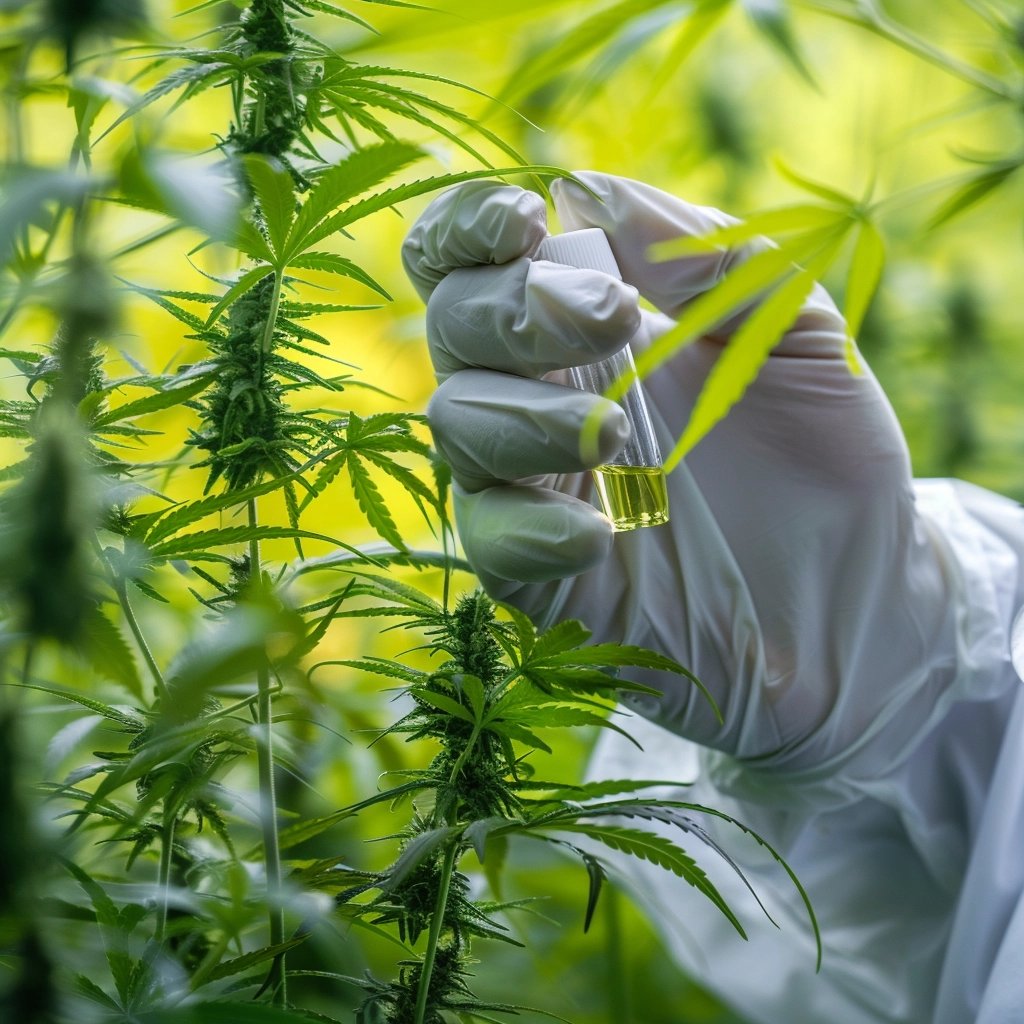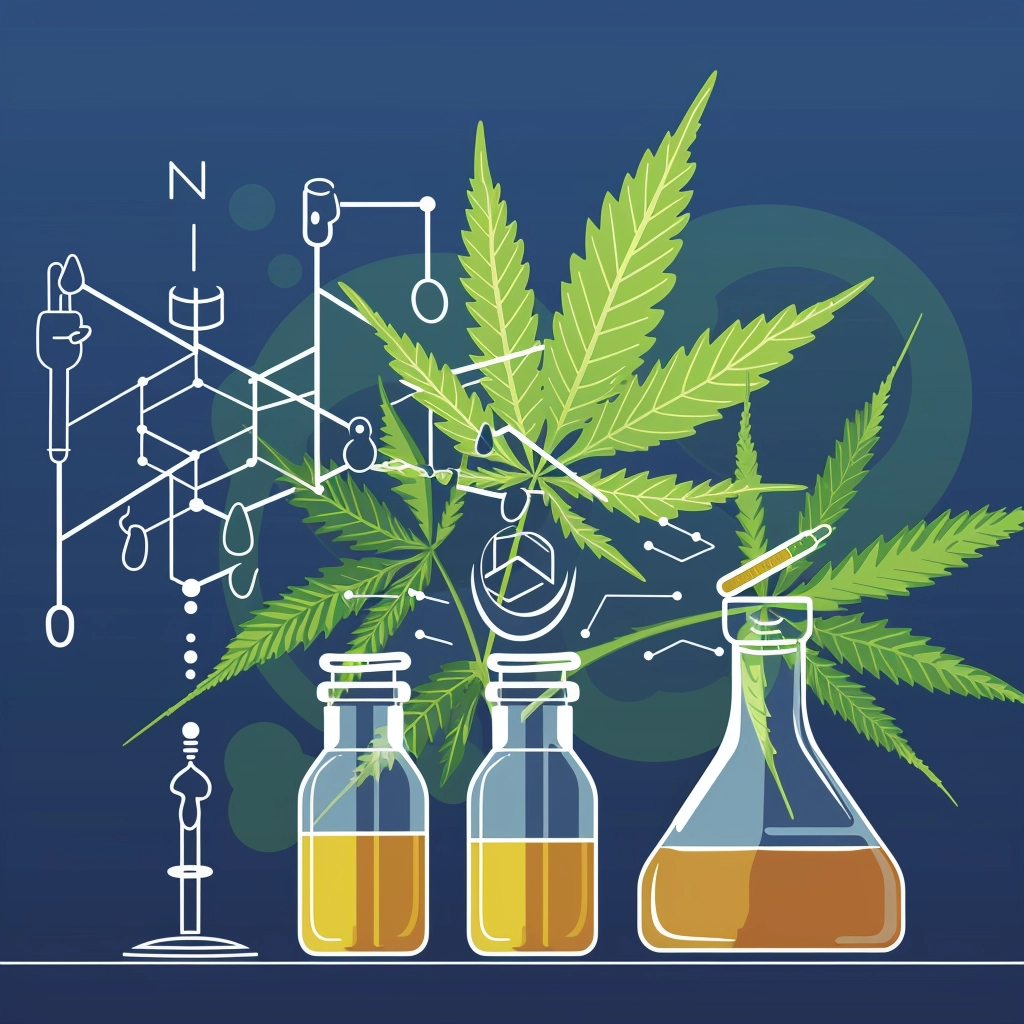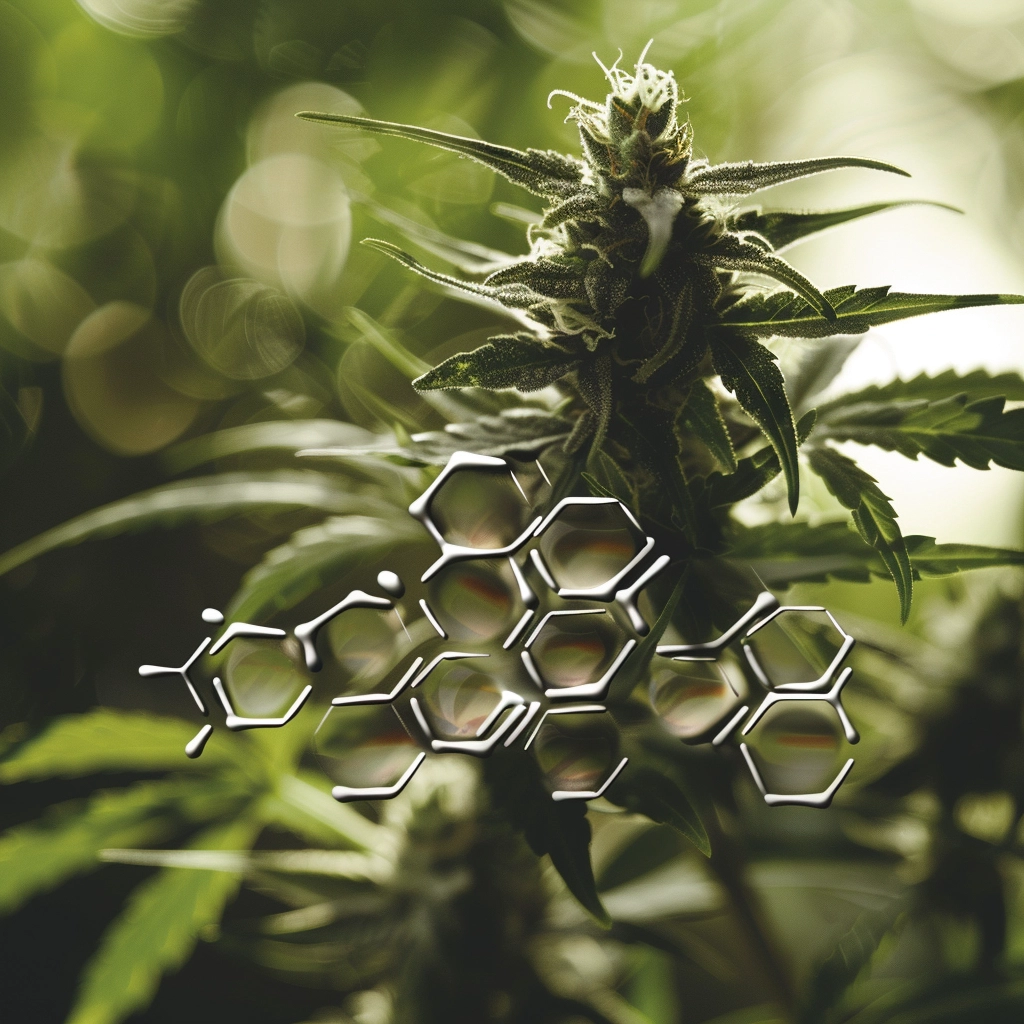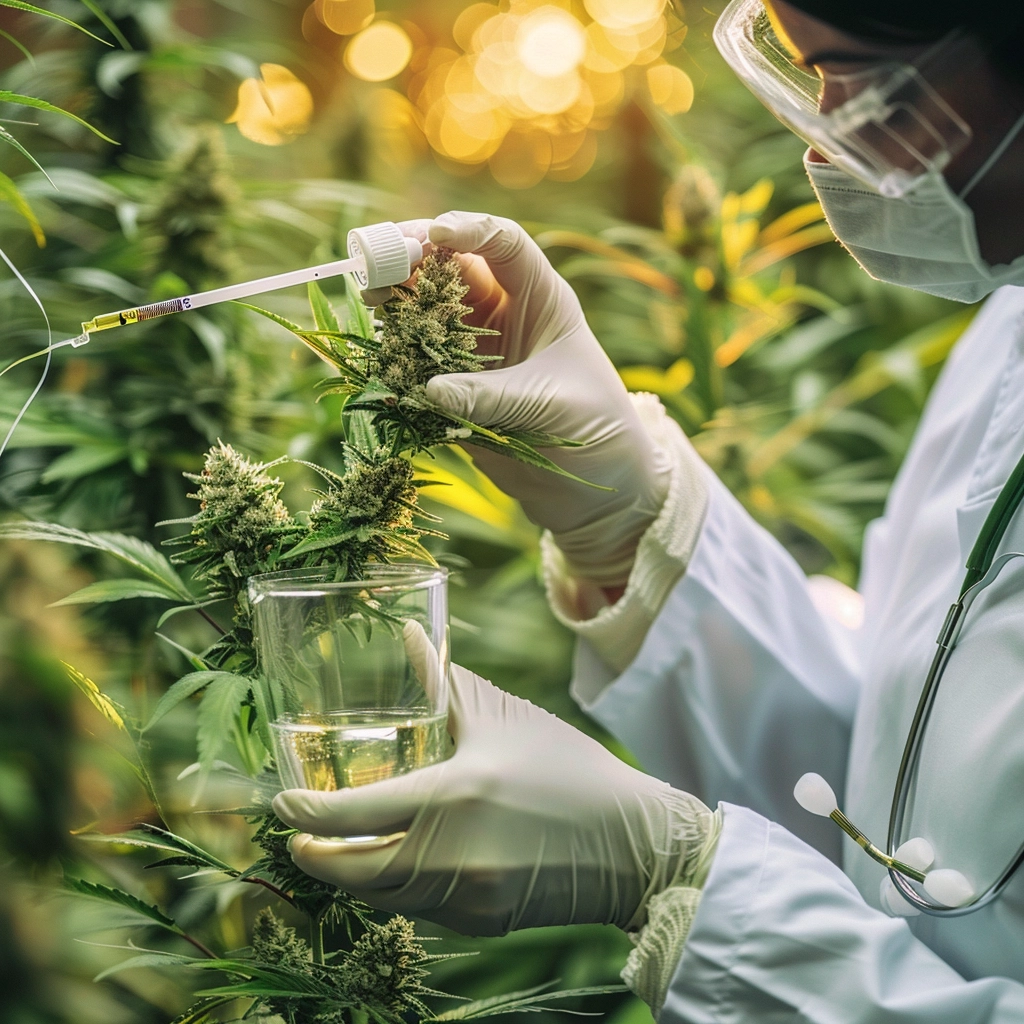Embarking on a journey through the molecular landscapes of medical cannabis reveals a complex interplay between the plant’s compounds and the human body. This voyage into the realms of cannabinoid pharmacokinetics and pharmacodynamics illuminates the mechanisms by which these potent molecules exert their therapeutic effects, offering a glimpse into the future of personalized medicine. As we delve deeper into the science of cannabis, we uncover the intricacies of how cannabinoids are absorbed, distributed, metabolized, and ultimately, how they interact with the body to elicit their profound effects.


Table of Contents
ToggleUnraveling the Mysteries: Cannabinoid Pharmacokinetics
Pharmacokinetics, the study of how drugs move through the body, is a critical foundation in understanding the therapeutic potential and safety profiles of cannabinoids. This exploration begins the moment a cannabinoid enters the body and embarks on a fascinating journey.
Absorption: The Gateway to Therapeutic Action
The route of administration plays a pivotal role in the absorption of cannabinoids. Inhalation offers a rapid onset of effects as cannabinoids swiftly enter the bloodstream through the lungs. In contrast, oral ingestion leads to a slower and more variable absorption due to the first-pass metabolism in the liver. Sublingual administration strikes a balance, offering relatively quick absorption with more consistent bioavailability.
Distribution: A Voyage Through the Body
Once absorbed, cannabinoids embark on a voyage through the body, binding to plasma proteins and dispersing into various tissues. The lipophilic nature of cannabinoids like THC and CBD allows them to cross the blood-brain barrier, reaching the central nervous system where they exert significant psychological and neurological effects.
Metabolism: The Transformation
The liver serves as the primary site for cannabinoid metabolism, where enzymes, notably cytochrome P450, transform cannabinoids into metabolites with varying degrees of activity. For instance, THC is metabolized into 11-hydroxy-THC, a potent psychoactive compound that contributes to the overall effects experienced by the user.
Elimination: The Conclusion of the Journey
Cannabinoids and their metabolites are primarily excreted through feces, with a lesser extent eliminated through urine. The elimination half-life of cannabinoids can vary significantly, influencing the duration of their therapeutic effects and the window of drug detectability.


Deciphering the Effects: Cannabinoid Pharmacodynamics
Pharmacodynamics delves into the mechanisms of action by which cannabinoids interact with the body to produce their therapeutic effects. At the heart of this interaction lies the endocannabinoid system (ECS), a complex network of receptors, endogenous cannabinoids, and enzymes that maintain physiological homeostasis.
The Dance of Cannabinoids and Receptors
Cannabinoids exert their effects primarily by engaging with cannabinoid receptors, CB1 and CB2, scattered throughout the body. THC’s psychoactive effects are attributed to its affinity for CB1 receptors in the brain, whereas CBD, with its more elusive mechanism of action, interacts with multiple receptor pathways, including serotonin receptors, to confer its anxiolytic and anti-inflammatory effects.
Beyond Receptors: The Entourage Effect
The pharmacodynamics of cannabinoids is further enriched by the entourage effect, a phenomenon where the therapeutic impact of the cannabis plant is enhanced by the synergistic interaction between cannabinoids, terpenes, and other plant compounds. This complexity suggests that the pharmacological activity of cannabis cannot be fully attributed to individual cannabinoids but is a concerted effort of the plant’s entire chemical repertoire.


Navigating Challenges and Advancing Understanding
The study of cannabinoid pharmacokinetics and pharmacodynamics is fraught with challenges, from the variability in cannabis strains and consumption methods to individual differences in metabolism and ECS functionality. However, these challenges also present opportunities for advancing our understanding of cannabis and its potential as a therapeutic agent.
Personalized Medicine: The Future Frontier
The future of medical cannabis lies in personalized medicine, where insights from pharmacokinetics and pharmacodynamics guide the selection of cannabis strains and dosing regimens tailored to the individual’s genetic makeup, condition, and treatment goals. As research continues to illuminate the pharmacological landscape of cannabinoids, we edge closer to harnessing their full therapeutic potential, offering hope for a future where medicine is not only effective but inherently personal.
In exploring the realms of cannabinoid pharmacokinetics and pharmacodynamics, we traverse the frontiers of science and medicine, uncovering the secrets of cannabis’s therapeutic power. This journey not only deepens our understanding of cannabis but also heralds a new era of treatment, where the ancient plant’s potential is fully realized in the crucible of modern medicine.
FAQ: Cannabinoid Pharmacokinetics and Pharmacodynamics
What are pharmacokinetics and pharmacodynamics in the context of cannabinoids?
Pharmacokinetics refers to the movement of cannabinoids through the body, encompassing their absorption, distribution, metabolism, and elimination. Pharmacodynamics, on the other hand, studies the effects cannabinoids have on the body, including their mechanisms of action and the interaction with cannabinoid receptors and other molecular targets.
How are cannabinoids absorbed into the body?
Cannabinoid absorption varies with the method of administration. Inhalation results in rapid absorption through the lungs, oral ingestion leads to slower absorption due to processing in the liver, and sublingual administration offers relatively quick absorption directly into the bloodstream.
Why is the metabolism of cannabinoids significant?
The metabolism of cannabinoids, primarily occurring in the liver, transforms them into metabolites that can have different levels of activity from the parent compound. This process is significant because it determines the potency and duration of the cannabinoids’ effects on the body.
What is the elimination half-life of cannabinoids?
The elimination half-life of cannabinoids can vary widely depending on factors such as the specific cannabinoid, the amount used, frequency of use, and individual differences in metabolism. For example, THC has an elimination half-life ranging from a few hours to days, influencing how long its effects last and how long it remains detectable in the body.
How do cannabinoids produce their effects in the body?
Cannabinoids produce their effects by interacting with the endocannabinoid system, which includes cannabinoid receptors (CB1 and CB2), endogenous cannabinoids, and enzymes. THC, for example, binds to CB1 receptors in the brain, producing psychoactive effects, while CBD’s effects are due to its interaction with multiple receptors and signaling pathways.
What is the entourage effect?
The entourage effect refers to the synergistic interaction between cannabinoids, terpenes, and other compounds in cannabis, enhancing the plant’s overall therapeutic potential. This effect suggests that the medicinal benefits of cannabis are not solely due to individual cannabinoids but result from the combined action of the plant’s various components.
Can the pharmacokinetics and pharmacodynamics of cannabinoids be personalized?
Yes, the future of cannabinoid therapy lies in personalized medicine, where the pharmacokinetics and pharmacodynamics of cannabinoids are tailored to an individual’s specific needs, genetic makeup, and health conditions. This approach aims to optimize therapeutic outcomes while minimizing side effects.
How does individual variation affect cannabinoid therapy?
Individual variation in factors such as genetics, metabolism, and the endocannabinoid system can significantly affect how one responds to cannabinoid therapy. These differences can influence the absorption, distribution, metabolism, and pharmacological effects of cannabinoids, necessitating personalized treatment approaches.
Are there challenges in studying cannabinoid pharmacokinetics and pharmacodynamics?
Yes, challenges include variability in cannabis strains, differences in administration methods, and individual biological differences. Additionally, legal and regulatory barriers can limit research access and hinder the comprehensive study of cannabis’s pharmacological properties.
These FAQs aim to shed light on the complex interactions between cannabinoids and the human body, offering insights into how these compounds are processed and how they exert their therapeutic effects. As research advances, our understanding of cannabinoid pharmacokinetics and pharmacodynamics will continue to evolve, paving the way for more effective and personalized cannabis-based therapies.
Kannabu's Online Cannabis Educational Resources
Read Educational Online Guides and Articles to Learn About Cannabis
- Navigating the Green Path: CBD vs. THC in Medical Treatment
- The Aromatic Architects of Healing: The Role of Terpenes in Medical Cannabis
- Navigating the Green Frontier: Clinical Trials on Cannabis and Its Effects
- Charting the Green Path: Cannabis Dosing Guidelines for Medical Use
- The Endocannabinoid System: Nature’s Balancing Act in Human Health
- A Green Horizon: Cannabis as an Alternative to Opioids
- Navigating the Mind’s Garden: Cannabis and Mental Health Treatment
- Unlocking the Green Code: Exploring the Genetic Diversity and Pharmacological Promise of Cannabis
- Weaving Green into Gold: The Integration of Medical Cannabis into Traditional Medicine
- The Therapeutic Promise of Medical Cannabis: Exploring the Spectrum of Cannabinoids
- From Young to Old: The Compassionate Embrace of Medical Cannabis in Pediatric and Geriatric Care
- Green vs. Traditional: Navigating the Crossroads of Medical Cannabis and Conventional Therapies
- Beyond the Pain: The Comparative Effectiveness of Cannabis in Chronic Pain Management
- Unlocking Cannabis’s Secrets: The Journey Through Cannabinoid Pharmacokinetics and Pharmacodynamics
- Green Paws: Navigating the Frontier of Medical Cannabis in Veterinary Care
- Unlocking Relief: The Transformative Role of Medical Cannabis in Pain Management
- Harnessing Harmony: Medical Cannabis and the Battle Against Autoimmune Disorders
- Embracing the Night: How Medical Cannabis Transforms Sleep Management
- Turning the Tide: Cannabis as a Catalyst for Relief and Recovery in Nausea and Appetite Stimulation
- Illuminating the Neural Pathways: The Transformative Role of Medical Cannabis in Neurological Conditions
- Harnessing Harmony: Medical Cannabis and the Battle Against Autoimmune Disorders
- A Clearer View: Medical Cannabis in the Treatment of Glaucoma
- Breaking Boundaries: Cannabis and the New Frontier in Epilepsy and Seizure Control
- Revolutionizing Relief: Medical Cannabis in Cancer Symptom Management
- Navigating the Storm: Cannabis as a Beacon of Hope in Multiple Sclerosis Treatment
- Cannabis: A Natural Respite for Arthritis and Joint Pain
- Healing from Within: The Role of Medical Cannabis in Treating Gastrointestinal Disorders
- Healing Invisible Wounds: Cannabis in PTSD and Trauma Treatment
- Balancing the Mind: The Potential of Medical Cannabis in Bipolar Disorder and Mood Stabilization
- Illuminating the Mind: Cannabis in the Treatment of Alzheimer’s and Neurodegenerative Diseases

